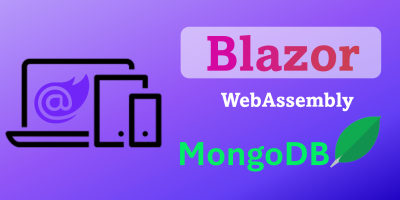Programming ADO.NET Entity Framework and LINQ
หลักสูตรนี้เหมาะสำหรับการเขียน application ที่ติดต่อกับฐานข้อมูล โดยใช้เทคโนโลยีล่าสุดของ Microsoft คือ ADO.NET Entity Framework และ LINQ ซึ่งจะทำให้ Programmer ...

หลักสูตรนี้เนื้อหาจะเป็นการประยุกต์ใช้คำสั่งในการจัดการกับฐานข้อมูล NoSQL ที่ชื่อ MongoDB โดยใช้ภาษา c#.net และการพัฒนา WebAssembly โดยใช้ Blazor โดยใช้ฐานข้อมูลเป็น MongoDB
Module 1: Introduction MogoDB and C#.net
Module 2: Introduction Blazor WebAssembly What is Blazor?
Module 3: Blazor WebAssembly Application
Module 4: Razor Components and Data Binding
Module 5: Composing Razor Components
Module 6: Razor Component Forms
Module 7: Razor Component Pages
Module 8: Using Server Data
Module 9: Interacting with JavaScript
หลักสูตรนี้เหมาะสำหรับการเขียน application ที่ติดต่อกับฐานข้อมูล โดยใช้เทคโนโลยีล่าสุดของ Microsoft คือ ADO.NET Entity Framework และ LINQ ซึ่งจะทำให้ Programmer ...
การพัฒนาโดยใช้ MVC 5 Framework จะทำให้การเขียนโปรแกรมมีประสิทธิภาพโดยลดการเขียนโปรแกรมที่สับซ้อน ในหลักสูตรนี้จะทำให้ผู้เรียนสามารถพัฒนาเว็บในรูปแบบของ MVC Framework และจะ...
การสร้าง Web Service และการเรียกใช้งาน Web Service โดยใช้ C# และ ASP.NET สำหรับผู้เริ่มต้นจนถึงประยุกต์ใช้งาน หลายคนคงจะเข้าใจความหมายของคำว่า Web Service...
ASP.net Core MVC เป็นเทคโนโลยีสำหรับการพัฒนาเว็บแอพด้วย .NET ในปัจจุบัน และอนาคตของไมโครซอฟท์ ปัจจุบันก้าวสู่เวอร์ชั่น 2.0 (.net core 2.0) เป็นเวอร์ชั่นใหม่ต่อมาจาก ASP.ne...